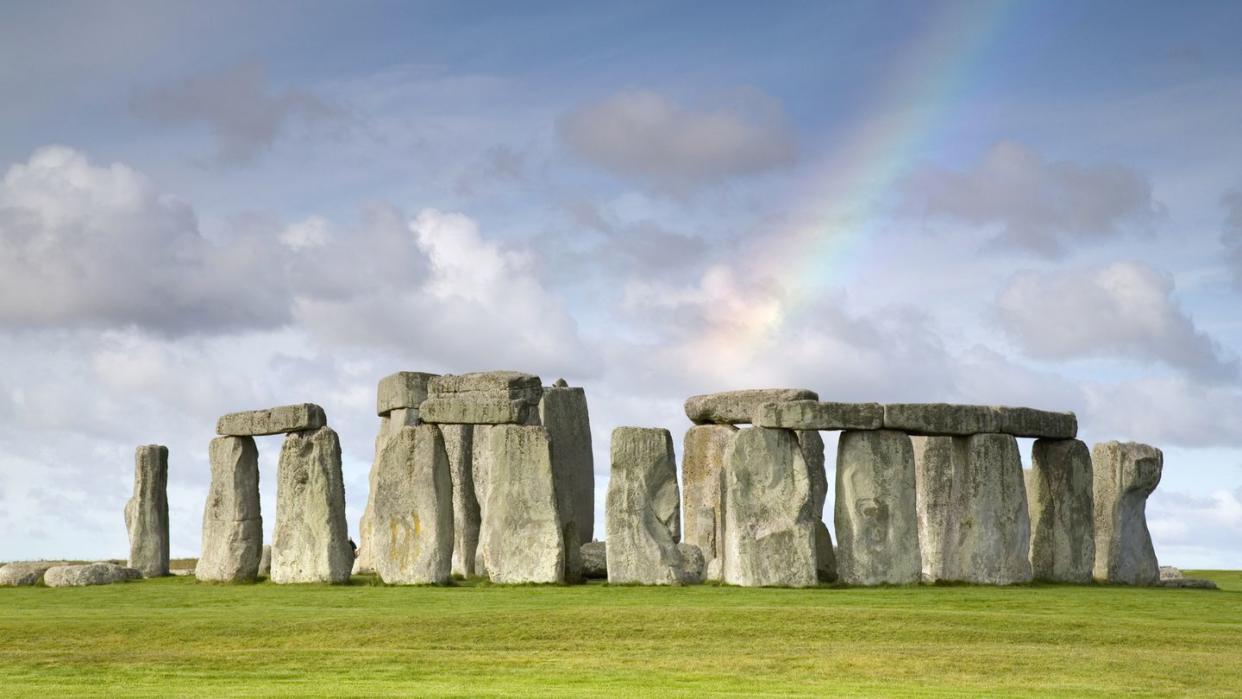Scientists Say the Moon Could Solve the Mystery of Stonehenge

"Hearst Magazines and Yahoo may earn commission or revenue on some items through these links."
Experts from English Heritage are investigating a new theory regarding a potential design influence for Stonehenge: the Moon.
A major lunar standstill occurs roughly every 19 years and the next one is happening in 2024, leading experts in England to see if this phenomenon could have anything to do with the way Stonehenge is set up.
During a major lunar standstill, the northernmost and southernmost positions of the Moon are at their furthest apart along the horizon.
Stonehenge builders may have been focused on the Moon all along. Experts in England hope that a once-every-19-years-event coming in 2024 could provide additional clues to help them finally understand why Stonehenge looks the way it does.
As English Heritage seeks to understand Stonehenge’s origins, the next theory the group wants to sift through—with the help of experts from Oxford, Leicester, and Bournemouth universities and the Royal Astronomical Society—is that of a major lunar standstill serving as the basis for the positioning of the famed Stonehenge setup.
During a major lunar standstill, which happens only every 18.6 years—the next one starts in the spring of 2024 and runs into mid 2025, with the pinnacle of the event happening in January of 2025—the northernmost and southernmost positions of the Moon are the farthest apart along the horizon. This unique Moon movement could have been observed during the early phase of Stonehenge construction, potentially influencing the monument’s design and purpose. This lunar phenomenon could have been the reasoning behind builders setting station stones in certain places, and could shed new light on how shadows point to burial sites.
“Rarer even than once in a blue moon, this opportunity allows us to delve deeper into the monument’s ancient mysteries and its relationship with celestial phenomena,” said Jennifer Wexler, English Heritage historian for Stonehenge, in a statement.
Experts can only speculate as to Stonehenge’s purpose, but with the Sun rising over the Heel Stone on the longest day of the year and setting over it on the shortest day, it suggests that the design was a prehistoric temple aligned with the Sun’s movements, English Heritage writes.
With a belief that Stonehenge’s architectural connections to the Sun are already established, the focus now turns to a less understood connection with the Moon. “The four Station Stones align with the Moon’s extreme positions,” Clive Ruggles, emeritus professor of archeoastronomy in the School of Archaeology and Ancient History at the University of Leicester, said in a statement, “and researchers have debated for years whether this was deliberate, and—if so—how this was achieved and what might have been its purpose.”
Observing the connection first-hand in 2024 and 2025 may offer new insight, Amanda Chadbum, a visiting fellow at Bournemouth University and a member of Kellogg College, University of Oxford, said in a statement. The team plans to document moonrises at key moments in relation to Station Stones, all with the goal of exploring the site’s potential complex relationship with the Moon.
“Unlike the Sun, tracking the Moon’s extremes isn’t straightforward, requiring specific timing and weather conditions,” Cahdbum said. “We want to understand something of what it was like to experience these extreme Moonrises and sets and to witness their visual effects on the stones (for example, patterns of light and shadow), and consider modern influences like traffic and trees, and to document all of this through photography for future study.”
English Heritage will also work with the University of Colorado Boulder and the U.S. Department of Agriculture’s Forest Service for reciprocal events to showcase and debate the Moon’s impact at Chimney Rock, Colorado.
A World Heritage Site, Stonehenge has inspired study and interpretation for centuries. Work began on the Salisbury Plain about 5,000 years ago, and the monument was built in stages. The stone circle dates from about 2,500 BC, in the late Neolithic period.
Experts don’t know exactly how the stones were brought to the site and some of them—specifically the bluestones—likely came from the Preseli Hills over 150 miles away in southwest Wales. Builders raised the stones using joints not seen in any other prehistoric monument, giving Stonehenge the title of the most architecturally sophisticated surviving stone circle in the world and giving us insight into the Neolithic and Bronze Age people who crafted the site.
You Might Also Like

